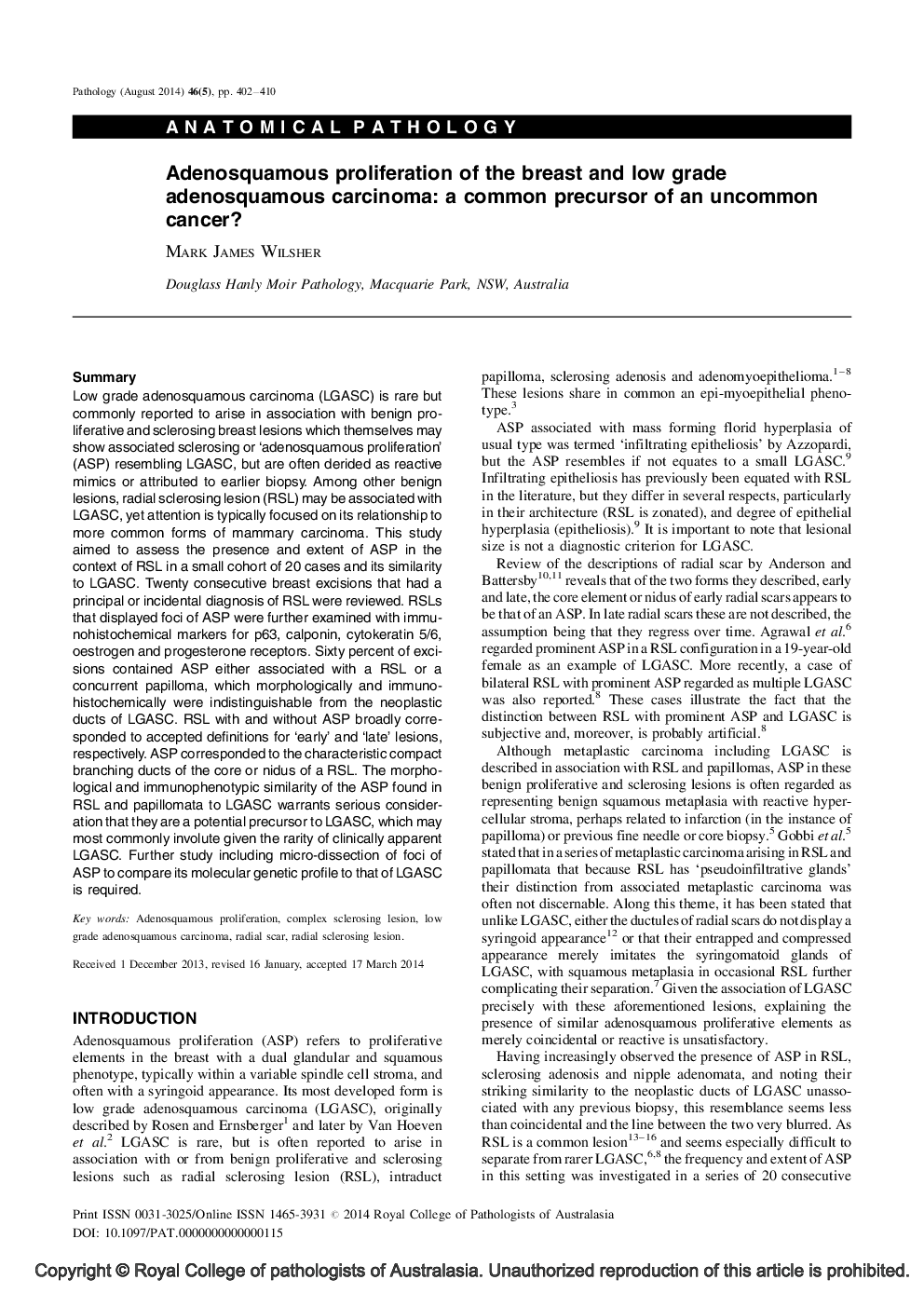| Article ID | Journal | Published Year | Pages | File Type |
|---|---|---|---|---|
| 104715 | Pathology | 2014 | 9 Pages |
SummaryLow grade adenosquamous carcinoma (LGASC) is rare but commonly reported to arise in association with benign proliferative and sclerosing breast lesions which themselves may show associated sclerosing or ‘adenosquamous proliferation’ (ASP) resembling LGASC, but are often derided as reactive mimics or attributed to earlier biopsy. Among other benign lesions, radial sclerosing lesion (RSL) may be associated with LGASC, yet attention is typically focused on its relationship to more common forms of mammary carcinoma. This study aimed to assess the presence and extent of ASP in the context of RSL in a small cohort of 20 cases and its similarity to LGASC. Twenty consecutive breast excisions that had a principal or incidental diagnosis of RSL were reviewed. RSLs that displayed foci of ASP were further examined with immu-nohistochemical markers for p63, calponin, cytokeratin 5/6, oestrogen and progesterone receptors. Sixty percent of excisions contained ASP either associated with a RSL or a concurrent papilloma, which morphologically and immuno-histochemically were indistinguishable from the neoplastic ducts of LGASC. RSL with and without ASP broadly corresponded to accepted definitions for ‘early’ and ‘late’ lesions, respectively. ASP corresponded to the characteristic compact branching ducts of the core or nidus of a RSL. The morphological and immunophenotypic similarity of the ASP found in RSL and papillomata to LGASC warrants serious consideration that they are a potential precursor to LGASC, which may most commonly involute given the rarity of clinically apparent LGASC. Further study including micro-dissection of foci of ASP to compare its molecular genetic profile to that of LGASC is required.
